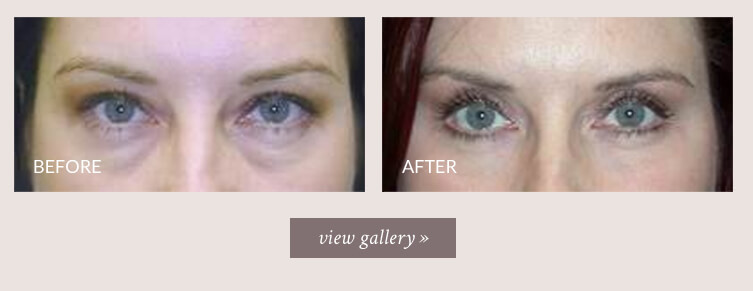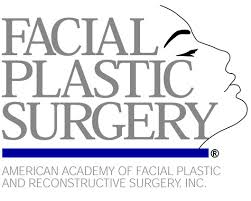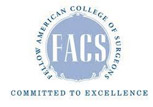Lower Eyelid Lift
Lower Blepharoplasty (Lower Eyelid Rejuvenation)
Lower blepharoplasty (also known as lower eyelid surgery or lower eyelift) is commonly performed for removal of eye bags and rejuvenation of the lower eyelids. Dr. Naficy has performed thousands of eyelid procedures and is experienced in all techniques of blepharoplasty, including a method of lower eyelid surgery that does not use external incisions (transconjunctival blepharoplasty) as well as laser procedures for rejuvenation of lower eyelid skin. Dr. Naficy's practice has been 100% devoted to facial plastic surgery for the past 20 years. This is why Seattle doctors and patients have voted Dr. Naficy one of the top plastic surgeons for the face. Patients from the entire globe seek Dr. Naficy's expertise and he has many patients flying in for surgery both nationally and internationally.
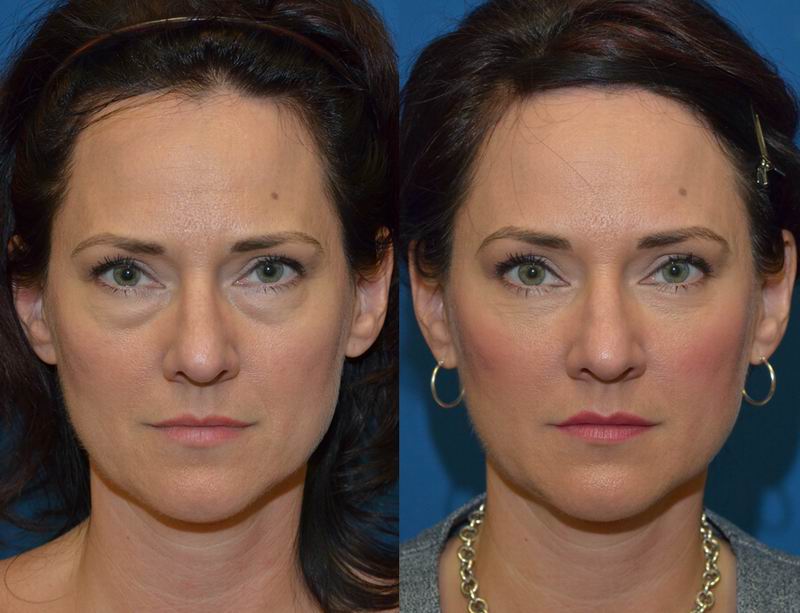
Before & After Lower blepharoplasty (lower eyelid lift) and fat grafting by Sam Naficy, MD. * Individual results may vary.
How do the lower eyelids age?
With age, the lower eyelids can also appear baggy, giving a tired, sometimes sad look to the face. Loss of fat in the the areas adjacent to the lower eyelids can result in dark shadows or dark circles, sometimes called a tear trough deformity. Finally, because the skin of the lower eyelids is very thin, it is quite prone to developing many fine wrinkles. At Naficy Plastic Surgery & Rejuvenation Center we have a comprehensive approach to eyelid rejuvenation and utilize both surgical and non-surgical treatments.
What can blepharoplasty achieve?
After cosmetic eyelid surgery, the eyes appear more rested and vibrant. The results can be so natural that friends and co-workers will often comment on how great you look, but may not realize that surgery was performed. The incisions lie in natural creases of the eyelid and usually heal extremely fast. Like all cosmetic surgery procedures, a great result is both in what you see and what you don't see. Dr. Naficy uses state of the art laser technology that produces remarkable results with rapid healing and minimal down-time.
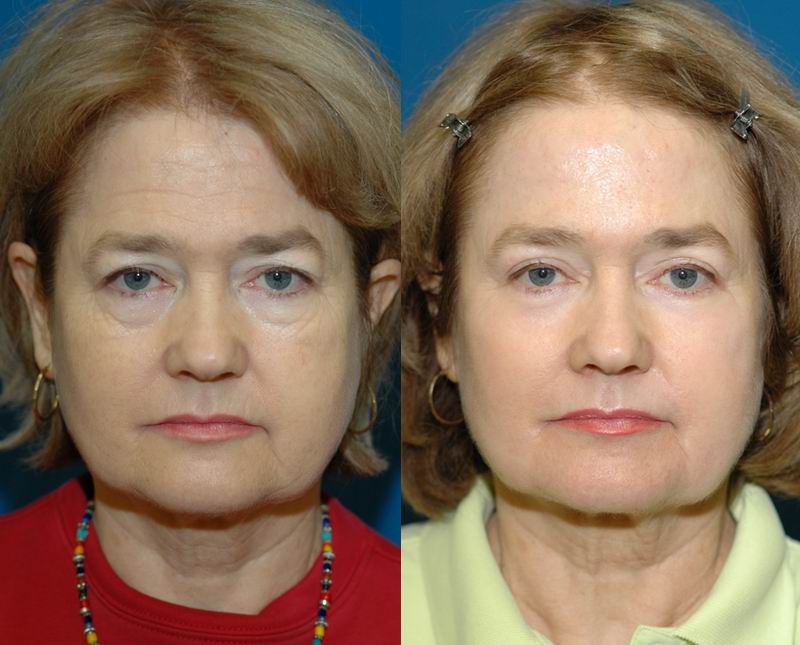
Before & After Lower blepharoplasty (lower eyelid lift) with laser resurfacing, fat grafting, and upper blepharoplasty by Sam Naficy, MD. * Individual results may vary.
What creates lower eyelid bags?
Lower eyelid bags are the result of two different age related changes. The first change is that with age the fat pads that are normally present under the eye tend to bulge out. The second change is that the upper cheeks (called the malar area) tend to lose fat with age. Reduction of this upper cheek fat (this is good fat that we all want to keep) is actually a big reason why lower eyelid bags appear more prominent. So in essence, we have a bulge where we don't need one, and we have a recess where we should have more fullness. This is why the best treatment for lower eyelid bags is a combination of removal of the bulging lower eyelid fat and addition of fat to the upper cheeks where fat has been lost.
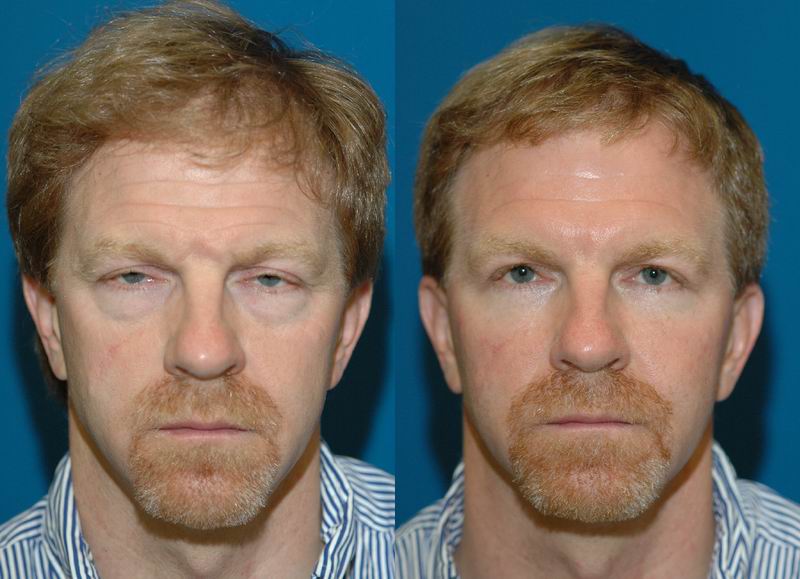
Before & After Lower blepharoplasty (lower eyelid lift) with fat grafting, and ptosis repair by Sam Naficy, MD. * Individual results may vary.
Eyelid Lift Photo Gallery
You may wish to browse through the gallery of representative before and after eye lift pictures. Click on any of the thumbnails to enter the slide show. All procedures were performed by Dr. Sam Naficy and some patients may have had more than one surgical procedure performed. The text accompanying the photos describes the details of the procedures performed.
* Individual results may vary.
What other procedures can be combined with blepharoplasty?
A number of other cosmetic procedures may be safely performed at the same time as lower blepharoplasty. These include laser resurfacing, fat grafting, upper eyelid lift, brow and forehead lift, and face and neck lift.
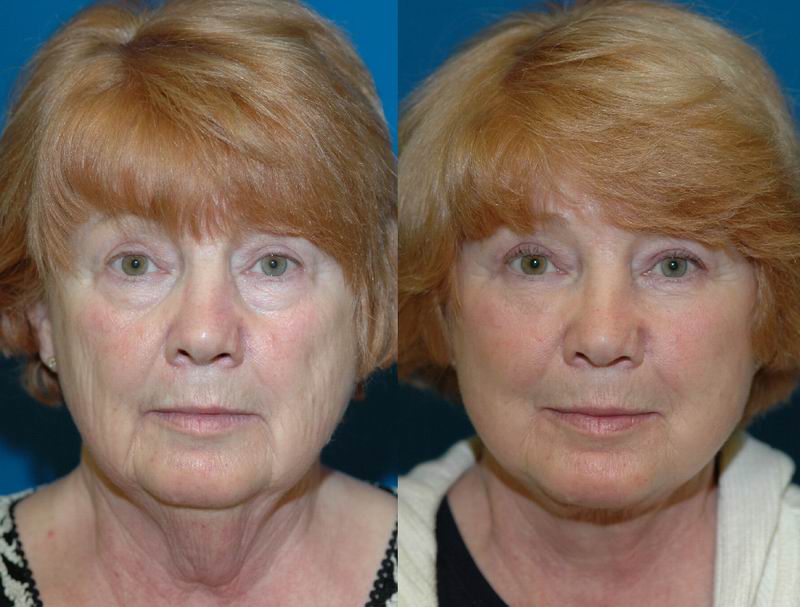
Before & After Lower blepharoplasty (lower eyelid lift), fat grafting, and face and neck lift by Sam Naficy, MD. * Individual results may vary.
What type of anesthesia is used?
A number of anesthesia options are available and your anesthesia provider will discuss with you which one is most appropriate for your health status and procedure. Some procedures require general anesthesia, while others may be done with IV sedation. With either, your heart rate, blood pressure, breathing and oxygen levels are monitored continuously by your anesthesia provider.
General anesthesia means that you are completely asleep for surgery and the placement of an intravenous line and a breathing tube is required. Frequently, numbing medication is also placed during surgery by your surgeon.
IV sedation is also called “monitored anesthesia care” or MAC. This involves receiving sedation and pain medication through an intravenous line (IV). At the beginning of the procedure, when you will be the sleepiest, your surgeon will be placing numbing medication in the area of the surgery. Once the area is numb you will require less sedation and pain medication but you will continue to receive enough medication to keep you sedated and comfortable during the entire procedure. During your surgery you may be receiving oxygen. Airway devices may be placed during IV sedation to keep you breathing normally.
Anesthesia guidelines [21kb PDF]
What is the recovery like?
There is minimal eye discomfort after the procedure, similar to having an irritated eye from allergies. Some swelling and discoloration may develop around the eyes for a few days. When laser resurfacing is performed at the same time as lower blepharoplasty, the recovery may be longer. With make-up, most of our patients can return to work or social activities in one week.
Post-operative care instructions [12kb PDF]
I am interested! What do I do next?
If you are considering this procedure we encourage you to complete this Surgical Consultation Intake Form. Dr. Naficy will tell you whether you are a suitable candidate for this procedure and inform you of the potential risks of the procedure. There is a great variety in eyelid shapes and features and each procedure must be custom tailored for the patient to get the best possible result. You will also have a chance to view before and after photo albums of his patients who have undergone procedures similar to what you are considering.


